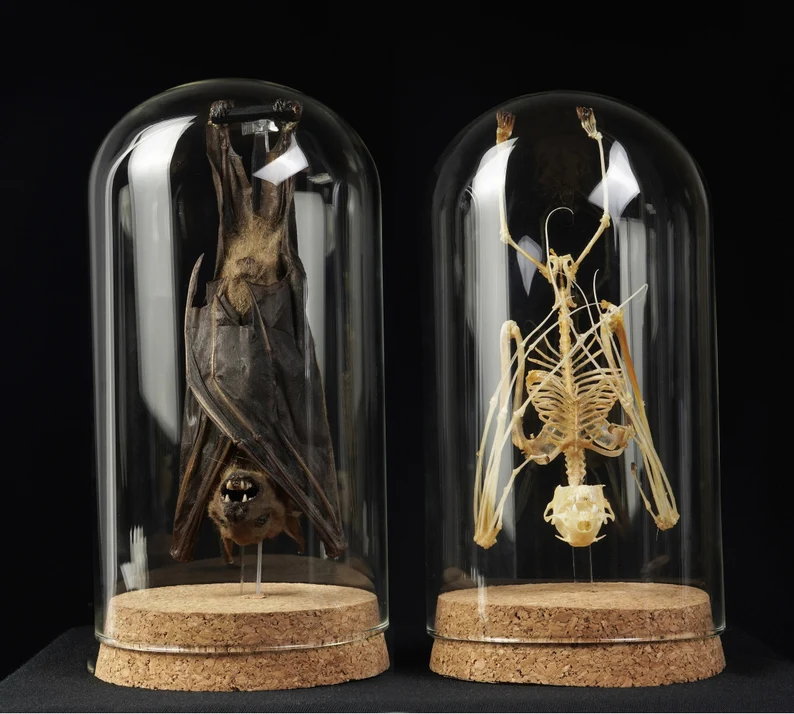



The Unethical Practice of Bat Taxidermy
In the world of collectors and enthusiasts fascinated by bones, oddities, and natural history, bats have become prized possessions. These intriguing creatures, displayed in various forms from framed wings to carefully crafted skeletons, are highly sought after. However, beneath their appeal lies a complex set of ethical and conservation challenges that need careful consideration.
At the heart of the matter is the idea of finding "ethically sourced" bat specimens. What qualifies as ethical sourcing varies among collectors, with some preferring bats found naturally or scavenged, while others are okay with those obtained through legal hunting or pest control. However, determining what's morally acceptable becomes tricky with bats. Unlike many other animals, bats don't thrive in captivity, so nearly all the specimens come from wild populations. This reliance on wild harvesting poses serious sustainability and conservation issues. Commercial-scale harvesting can harm bat populations, even if they're not currently endangered. Many bat species live in large groups, making them vulnerable to mass trapping. This, combined with their slow reproductive rates, can have lasting effects on their populations.
Adding to the complexity are the legal and transparency issues surrounding the trade in bat specimens. Many specimens come from regions with weak animal conservation laws or are obtained illegally through poaching. Mislabeling and misrepresentation of species identities further complicate matters, leading unwitting buyers to support the illegal trade in endangered bat species.
Unlike other animals used in taxidermy, bats are usually killed solely for display purposes, which increases the demand for them as novelty items. Some argue that naturally deceased bats could be ethically sourced, but their legality is often uncertain, especially concerning wildlife protection laws. Moreover, certain bat species are federally protected, making their possession a federal crime.
Even bats killed for reasons unrelated to collecting, like disease control or managing invasive species, can harm bat populations inadvertently. Despite these challenges, the allure of bat specimens persists, with some collectors sourcing them from artists specializing in macabre taxidermy. However, the ethical implications of such acquisitions remain murky.
As the popularity of curiosity cabinets and bone collections grows, it's crucial for collectors to consider where their specimens come from and how their collecting habits impact the broader ecosystem. Bats play vital roles in ecosystems worldwide, from controlling insects to pollinating plants. Preserving their populations is essential not only for ecological balance but also for public health, as bats can carry diseases that pose risks to humans.
As long as there's demand for these items, bats will remain exploited and threatened. It's up to collectors to refrain from purchasing bat specimens obtained unethically and to explore alternative ways of building their collections. By doing so, they can contribute to the conservation of these remarkable creatures and their habitats, ensuring they're appreciated by future generations for their beauty and ecological importance.